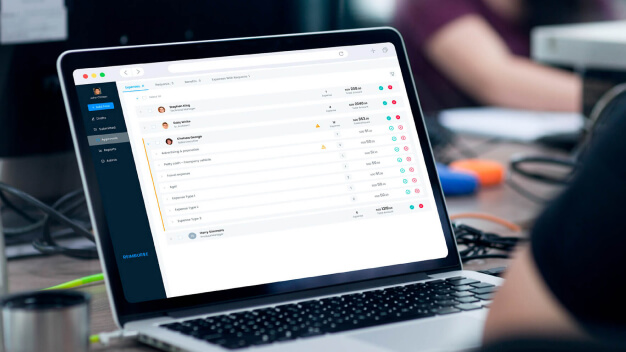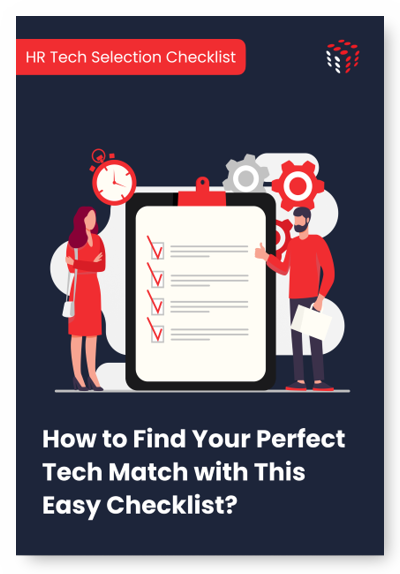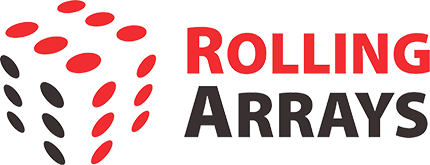
Whitepaper
The Enterprise HR Tech Buyer’s Guide to Choosing the Right Software Suite
HR Tech Buying Guide Included


Table of Contents
- The Enterprise HR Tech Buyer’s Guide to Choosing the Right Software Suite
- The Role of HR Technology in the Modern Workplace
- Types of HR Software Vendors Vs Types of Customers
- Differences in Compliance and Security Management
- User and Access Management
- Integration
- Implementation: Partner Ecosystem
- Choosing Between Various Categories of HR Tech
- How to Successfully Implement Your HR Tech
- The Post Go-Live Structure
- Conclusion

HR Tech Buying Guide
A checklist of 10-15 questions for readers to evaluate their needs and vendor fit e.g. employee strength, integration needs, budgets etc.
RESOURCES > WHITEPAPER > The Enterprise HR Tech Buyer’s Guide to Choosing the Right Software Suite
The Enterprise HR Tech Buyer’s Guide to Choosing the Right Software Suite
The role and responsibilities of the Chief Human Resources Ocer have changed dramatically. CHROs are not only responsible for hiring a diverse, flexible, and agile workforce operating from multiple locations (including multiple continents), but are often tasked with choosing the right HR Tech System.
Modern CHROs have to build e ective cross-functional teams, liaise and design a robust network of vendors and implementation specialists; integrate the various systems at their disposal; compile the best possible tech stack to meet the needs of their stakeholders, and plan the buying and implementation process down to the most minute details.
Choosing the right HR Tech system means picking the right HR Software vendors, add-ons, implementation and integration plan, and making or overseeing processes and tools for ongoing support and long-term success.
The Role of HR Technology in the Modern Workplace
Whereas many critics worried that human capital management technology would create a divide between employers and employees, the opposite has been true. Before the pandemic, many customers were already moving toward cloud-based HR software. However, the pandemic made virtual training, hiring, and talent engagement more important. As a result of the shift toward working from home, virtual interviews and hiring, as well as tools for working together from home, have become the norm.
HR software has also made it easier for HR professionals to keep track of data about their employees, offer effective remote learning and onboarding, and set up automated payment and compensation plans. However, not all customers have taken advantage of these developments. Manual, semi-automated, or inefficient systems can greatly undermine the work the HR department (and, subsequently, the entire customer workforce) is trying to do. HR professionals can do a lot more if they use the best technology tools to build a unified and effective HR software system. And that would mean sourcing for the right HR Software Vendor, to begin with.
Types of HR Software Vendors Vs Types of Customers
HR Software Vendors Categories
| Category | Tier | Ecosystem | Examples |
|---|---|---|---|
| 1 | Tier 1 | System integrators, Big 5 consultancies, add-ons | SAP SuccessFactors, Oracle, WorkDay |
| 2 | Tier 2 | Resellers, partners | Unit 4, Bamboo HR, Darwinbox, PeopleStrong |
| 3 | Tier 3 | NA | TimeSoft, BIPO |
HR leaders are taking a far more proactive role when choosing the right HR Software Vendor for their organisation. As a result, human resource departments are moving toward a tech-enabled, automated future that benefits the whole organisation.
However, there is often a great divide between the HR software system available on the market and the organisation’s budget and needs. As a result, some customers buy HR software systems that aren’t very good for their needs and end up using a bunch of dierent ones that don’t work well together. This makes it hard to share data, make decisions, and make systems less clear.
It can be challenging to decide, as several stakeholders (including payroll, HR, IT, and recruitment) may be involved, each with their own deeply entrenched views. The list of possible systems these stakeholders are given can be overwhelming, and a final decision may be made to end the process.
Types of Customers
| Types | Definitions |
|---|---|
| Small customers | Fewer than 100 employees and/or less than 50 million in annual revenue. |
| Mid-Market customers | 100 to 999 employees and/or more than $50 million but less than $1 billion in annual revenue. |
| Enterprise customers | More than 1,000 employees and/or more than $1 billion in annual revenue. |
Tier 2 HR software systems struggle to cater to the comprehensive requirements of enterprise customers, whilst Tier 1 HR software systems are overkill for Mid-Market customers. By general definition, the type of customer is a combination of revenue and headcount. Still, it leans towards headcount when it comes to the selection of HR system as that is the usual consideration dependency.
Henceforth, any customers with less than 1,000 employees (regardless of revenue) are likely better served by Tier 2 or Tier 3 HR software vendors who generally specialise in small and mid-market customers. On the other hand, customers with more than 1,000 employees are likely better served by Tier 1 HR software vendors who generally specialise in enterprise customers.
| Customers | Headcount and Presence | HR Software Vendors |
|---|---|---|
| Small customers | Fewer than 100 employees | Tier 3 |
| Mid-Market customers | 100 to 999 employees | Tier 2 |
| Enterprise customers | More than 1,000 employees | Tier 1 |
Some of the Additional Factors Include:
Differences in Compliance and Security Management
Modern customers operate globally within a complex regulatory and business environment. customers have moved their IT infrastructure to the cloud and started using cloud-based systems, which makes this situation even more complicated. Usually, the customer and the HR software vendor both have some responsibility for security and privacy.
There are specific HR software vendors that are more equipped to handle, analyse, and equip customers with the right security measures and implementation processes to meet their legal and regulatory obligations. However, it is up to the customer to determine and assess the competence of the vendor in this regard.
By getting the right data from the right sources, an integrated HR software system can also help a business meet its GDPR requirements. Automation can fill out office documents like tax forms, insurance forms, and benefit forms to make sure everyone is in compliance. As regulatory rules change, the HR software system needs to be strong enough to let rules be updated and applied consistently across all relevant modules and geographies.
Mid-and entry-level HR software systems may be incapable of automating this process, resulting in a duplication of eort.
Enterprise customers have to follow the strictest rules and may find that SAP SuccessFactors, Oracle HR software, and Workday HR software are best able to meet their needs. Customers with less strict IT security needs can use Mid-Market HR software vendors like Unit 4 or Bamboo HR.
User and Access Management
HR key users are globally and regionally distributed. During the implementation, adoption, and usage of a new HR software system, HR leaders need to ensure that the authorization matrix (the list of roles and profiles assigned to users who authorise transactions and other sensitive activities) is kept up-to-date and maintained regularly.
User and access management often begins and ends with your HR software system, as it should, in theory, have the most accurate and up-to-date information about your employees. But getting your HR software system up to speed so that it can be the single source of truth is hard because it requires integrating complex IT and HR systems, which often requires multiple teams and manual processes that can lead to mistakes.
There should be no delays or inconsistencies in application design or information, and a low risk of manual errors so that employees can always have access to the most up-to-date information and the systems they need to perform their duties. Make sure that your HR software vendor offers thorough integration and can sync your user information from your HR system across all systems within the IT directory so that whenever users are created, updated, or deleted in the HR software system, the information is successfully passed to the IT directory so that access rights and permissions are implemented to applications in real-time.

Unlock HR Bliss
Find Your Perfect Tech Match with This Easy Checklist
The Key Benefits:
- Effortless Evaluation
- Clear Comparison
- Confident Choice
- Optimised HR
Integration
Smaller, less complete HR software vendors often use a semi-manual process for integration, which can lead to mistakes. As users come and go or change, integrations can get harder to set up and keep up to date. Enterprise HR software vendors like Oracle HR software, SAP SuccessFactors, ADP, and Workday HR software have frameworks for integration that include the right practices and information to streamline HR processes and reduce human error.
They can also solve problems, such as getting rid of paper-based manual processes, finding and dealing with skill gaps, getting rid of silos, and more. Investing in HR software is best when it can handle HR, talent management, payroll, and other tasks in a single system.
Larger enterprises can reduce integration costs because they only need one point of integration to connect to your tech ecosystem. Different systems with different applications require a lot of work and multiple integrations, which can also make your maintenance costs go up over time.
Implementation: Partner Ecosystem
It’s important to look at not only the HR software vendor but also their network of implementation partners who can set up and support the system. This way, the customer won’t be too dependent on the product principal. Consider a Mid-Market HR Software vendor like Unit 4, which has 6,000 customers worldwide. There aren’t many consultants looking after their customer base because it is still quite small.
SAP, on the other hand, has more than 425,000 customers in 180 countries. There are over 30,000 SAP SuccessFactors consultants serving the market alone—excluding the team working for SAP itself. This makes it easier for businesses to access support when they need it most.
Large enterprise customers should only consider a SaaS provider with at least five independent service partners in the region that can oer the implementation and maintenance support they require.
Choosing Between Various Categories of HR Tech
Have you heard the expression, “a jack of all trades is a master of none”? Picking an HR tech system is not about which has the most features. There is no system on the market (in any category and price) that can perfectly meet every one of your HR needs. Let’s consider some of the broad HR Tech categories on the market and their functions:
| HR Category Type | Features | Examples |
|---|---|---|
| Core HRIS Platform | Centralised storage, Employee Self-Service, Reporting | SAP SuccessFactors, Workday HR software, Oracle HR software, Darwinbox, and Bamboo HR |
| Compensation Management | Compensation planning, processing and reporting; bonus processing; budget administration; reporting and analytics | Workday HR software, PayScale MarketPay, Ceridian, UKG Pro |
| Employee Engagement Software | Employee surveys, employee achievement awards, feedback management, health and wellness programmes | Qualtrics, CultureAmp, Glint, EngageRocket, Kazoo, Sociabble, Kudos Workvivo |
| Payroll Software | Check printing tools; direct deposit management; benefits management; multi-currency management; salaries, expense tracking, invoicing, general ledger management, timesheets, and self-service support portals | SAP SuccessFactors, Deel, ADP |
| Performance Management | Appraisal tracking, KPI & goal setting, competency monitoring, rating scales, personal development planning, and peer appraisal boards | Lattice, Betterworks, Mesh Trakstar, 15Five |
| Recruitment Software | Job Boards, job tracking, background screening, pre-employment testing, onboarding, resume parsing, reference checking | Lever, Greenhouse, JobAdder, Workable, JobVite, Paradox, Leena Gem, XOR, DRUID |
| Workforce Management Software | Reports on budgets and forecasts; call centre management; labour planning; shift scheduling; time and attendance database; work logs | Kronos, Workforce Optimizer, Deputy, CICO Rotageek, TCP, WorkInSync |
| Talent Development | Role definition, skills audits, and competency management, Career planning and training management, Succession planning | LearnUpon, WorkRamp Epignosis learning technologies, Absorb Docebo, Go1 Skillsoft, GoodHabitz HIS, EDX, Lattice, Gloat GrowthSpace, Neobrain Bridge |
| Rewards, Recognition and WellBeing | Behavioural Email, Service Anniversaries, Management of Programme Budgets, Peer to Peer Recognition, Full Rewards Catalog, Employee Ideas Module, Conduct confidential Personal Health Assessment, Track program participation and activity, Track and administer incentives and rewards, Encourage social support | Resal, guusto, Empuls O.C. Tanner, Kudos, Virgin Pulse, Unmind, Limeade ThoughtFull, Wysa Intellect |
| Travel & Expense Management | Pre-approving trips Travel booking Scanning and attaching receipts Mobile reporting and workflow Expense reporting and approval workflow Integrating credit cards for payments if needed Providing employee reimbursements via direct deposit Reviewing expenses using analytics Using electronic payments Establishing consistent expense types and audit rules Dashboard reporting for instant spend visibility | Reimburse, Concur, Chrome River, Divvy and Brex |
The list, of course, goes on. No matter which software you purchase, there will always be a gap. Each system has several useful features and applications, but there isn’t one that can do absolutely everything.
Not one size fits all
For large enterprise customers especially, it is important to understand that one software vendor will never be able to provide all features.
Specialization in niche software
HR Software niche vendor that specialises in just one or few niches (such as Learning Experience, Talent Mobility, Professional Coaching, Content Authoring, Well-Being etc) will always be ahead of the curve as compared to HR Software platform vendors like SAP SuccessFactors, Oracle HCM and Workday HCM.
Necessity of a global HR software
Having said that, large enterprise customers would still need a Tier 1 HR Software Vendor who can support their needs as the base platform.
Factors to pick the right vendor
One that is robust, integrable, secure, has a big ecosystem of consultants, and implementation partners and then picks the right best of the breed on top of them to bring about the HR Transformation with the most important areas that their business needs.
How to Successfully Implement Your HR Tech
Choosing the right HR Tech system isn’t a task that can be performed in isolation, nor can it be done quickly.
Choose the Right Internal Team
You need the right team on your side to ensure that the HR software vendor meets all of your requirements in terms of compliance, integration capabilities, and features. Choose an internal team of the project, process, and data owners, as well as internal advocates that can promote and communicate the changes within the system. They don’t need to devote themselves to the task full-time but should be willing to set expectations and provide information that will assist stakeholders with making the right decision.
Choose the Right Implementation Partner
Next, ensure that you have the right implementation partner on your side. These are consultants who are both experienced in the HR tech system being implemented as well as the industry the business operates in. A good network of multiple implementation consultants is a good sign that you can expect support and guidance should you need it down the line.
Taking the Time, You Need to Implement
Even if time is of the essence, put aside at least 1-2 months to prepare and streamline your processes, data, and systems before the actual implementation process starts. Cleaning up your data, for example, can shave days or weeks from the migration and implementation process.
Invest in a Good Adoption Plan
Often the key to a successful implementation plan is achieving buy-in from your teams and employees. A solid adoption plan communicates the benefits of the new system, manages change, reduces anxiety, and helps the organisation reduce the time-to-value-realisation ratio significantly.
The Post Go-Live Structure
Successful implementation doesn’t end on the go-live date. Every organisation experiences challenges and post-go-live issues that need to be resolved. Often this stage is the true test of an Implementation Partner’s mettle and suitability, especially since Implementation Partners often have their own post-go-live priorities to contend with. Customers should ensure that Implementation Partner vendors have extensive ticketing systems and that they take pains to avoid feature creep where new issues are addressed efficiently instead of turning into new projects altogether.
Ask your Implementation Partner to explain the post-live support process and project plan. This process should be revisited closer to the go-live date and give employees the opportunity to ask questions or address concerns. The vendor should also clarify how responsibilities are divided within their internal team and perform the necessary knowledge transfer between their implementation team and technical support.
The post-go-live structure should monitor the usage of the system, adoption issues, and process gaps. There should be a framework that constantly seeks to improve the system and deliver the necessary outputs. Many CHROs will say that HR digital transformation fails at the implementation stage, but the truth of the matter is that transformation is an ongoing process that only starts once the system has gone live.
Conclusion
Picking the right HR software system is less about examining the features and more about examining the vendor themselves. Make sure that you fully understand your vendor’s ability to scale and integrate with your existing tech stack, that they have standards and processes for compliance and security, adequate support, and a strong network of implementation consultants and partners.
Bonus
Take our self-assessment quiz to find out if you are picking the right HR Tech suite for your enterprise. It only takes less than 5 minutes to complete and you will get a one-pager report on where you stand.
About Rolling Arrays
Rolling Arrays has been driving SAP SuccessFactors-led HR Transformation since 2009. The company specialises in SF consulting, implementation, and support and also builds applications to enhance the utility of the SuccessFactors platform. It is committed to designing systems that help its customers to attract, develop and retain talented individuals. In 2021, Rolling Arrays was recognized as one of the top 75 fastest-growing companies in Singapore by The Straits Times & Statista.



Share with your network
Get updates in your inbox